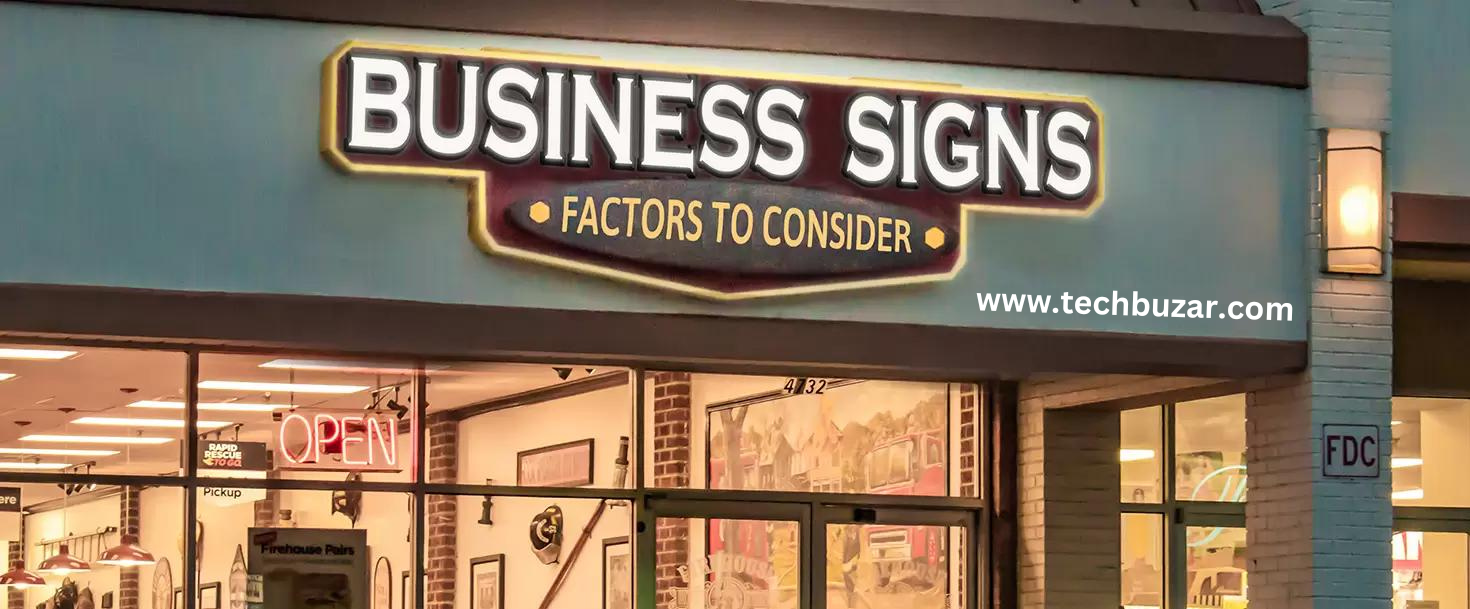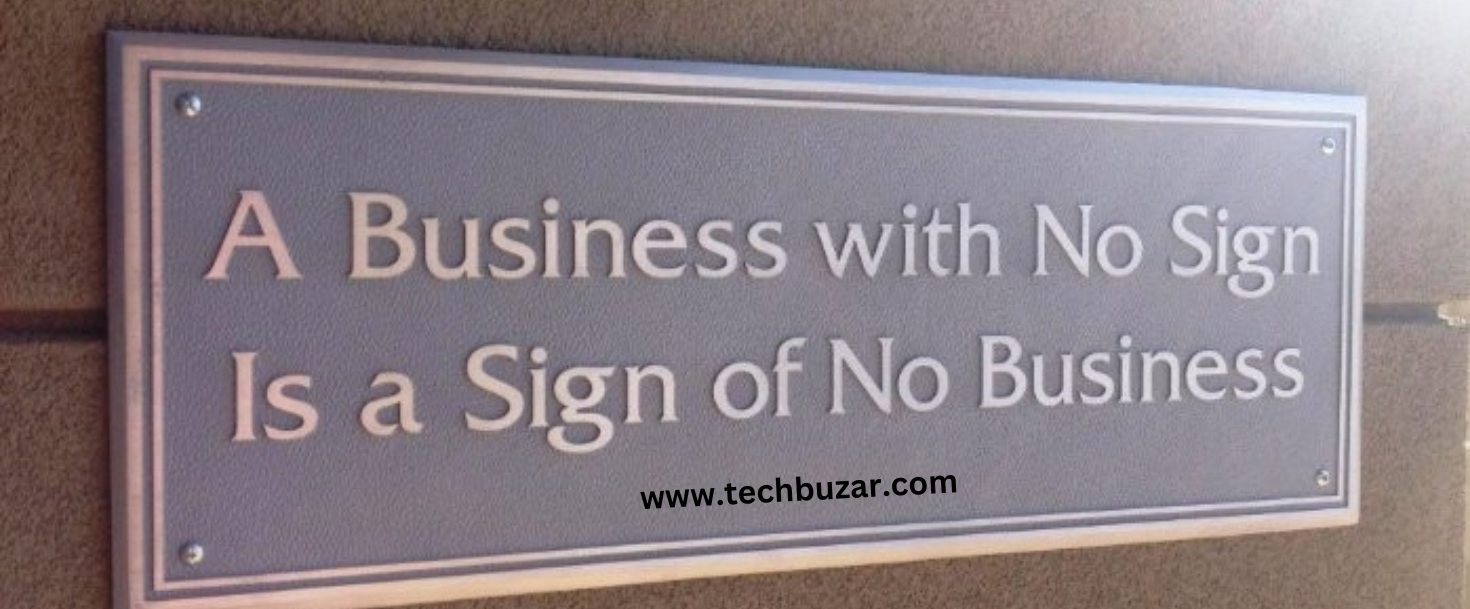
The Importance of Business Signs: Your Guide to 100% Effective Signage Strategies
The Importance of Business Signs: Business signs are more than just displays; they are vital components of a company’s brand identity and marketing strategy. Effective signage can attract customers, enhance brand visibility, and communicate important information. In this comprehensive guide, we’ll explore the various types of business signs, design considerations, cost factors, and maintenance strategies to help you create impactful signage for your business.
Outdoor Business Signs
Outdoor signs serve as the first point of contact between a business and its potential customers. Whether it’s storefront signage, billboards, or directional signs, outdoor signs should be eye-catching, informative, and reflective of your brand identity. When designing outdoor signs, consider factors such as visibility, readability, and durability. Choose materials that can withstand the elements and select fonts and colors that align with your brand.
Indoor Business Signs
Indoor signs play a crucial role in guiding customers through your business space and reinforcing your brand identity. From lobby signs to directional signage, indoor signs should be cohesive with your overall branding and easy to understand. Additionally, businesses must ensure compliance with ADA regulations by incorporating features such as Braille and tactile elements in their indoor signage.
Digital Business Signs
Digital signage offers businesses a dynamic way to engage with customers and convey information. From digital menu boards to interactive kiosks, digital signs can be easily updated with new content and tailored to specific audiences. When implementing digital signage, businesses should invest in user-friendly content management systems and create visually appealing and relevant content.
Cost Considerations for Business Signs
The cost of business signs can vary depending on factors such as size, materials, and complexity. While quality signage is a worthwhile investment, businesses should carefully budget for signage projects and explore cost-saving options where possible. Consider partnering with a reputable signage company that offers transparent pricing and delivers high-quality results within your budget.
Hiring a Signage Company
When selecting a signage company, it’s essential to research and compare multiple providers to find the best fit for your needs. Look for companies with a proven track record of delivering quality signage solutions and excellent customer service. Be sure to ask questions about their design process, materials used, and installation timeline to ensure a smooth and successful collaboration.
DIY vs. Professional Signage
While DIY signage may seem like a cost-effective option for some businesses, professional signage services offer several advantages, including expertise, quality assurance, and time savings. Businesses should evaluate their specific signage needs and budget constraints before deciding whether to DIY or enlist the help of professionals. For small businesses on a tight budget, DIY signage can still be effective with careful planning and execution.
Trends in Business Signage
The signage industry is constantly evolving, with new trends emerging to meet the changing needs of businesses and consumers. From eco-friendly materials to interactive displays, businesses can leverage innovative signage solutions to stand out in a crowded marketplace. By staying informed about current trends and technologies, businesses can ensure their signage remains relevant and impactful.

Importance of Maintenance and Upkeep
Regular maintenance is essential for preserving the appearance and functionality of business signs. Businesses should establish a routine maintenance schedule to inspect signs for damage, cleanliness, and visibility. Promptly address any issues such as fading, peeling, or malfunctioning lights to maintain a positive brand image and ensure the longevity of your signage investment.
Case Studies: Successful Business Signage Strategies
Examining real-life examples of businesses with effective signage strategies can provide valuable insights and inspiration for your own signage projects. Whether it’s a local storefront with eye-catching signage or a global brand with innovative digital displays, these case studies demonstrate the power of strategic signage in attracting customers and driving business growth.
Regulatory Compliance and Permits
Before installing any business signs, it’s crucial to understand and comply with local regulations and zoning laws. Obtain the necessary permits and approvals for signage installation to avoid costly fines and delays. Work with a signage company that is knowledgeable about local regulations and can help navigate the permitting process on your behalf.
Cultural and Language Considerations
In today’s diverse marketplace, businesses must consider cultural and language preferences when designing signage. Multilingual signage can help businesses better serve customers from different linguistic backgrounds and enhance inclusivity. Additionally, businesses should be mindful of cultural sensitivities and avoid any imagery or messaging that may be offensive or misinterpreted.
Signage in the Digital Age
With the rise of online and mobile technologies, businesses can integrate their signage efforts with digital marketing strategies to reach customers both online and offline. QR codes and NFC technology can be incorporated into signage to provide additional information or drive online engagement. Social media platforms offer opportunities to promote signage campaigns and amplify brand messaging to a wider audience.
Future of Business Signage
As technology continues to advance, the future of business signage holds exciting possibilities. From augmented reality experiences to sustainable materials, businesses can expect to see continued innovation in signage design and functionality. By staying ahead of emerging trends and embracing new technologies, businesses can future-proof their signage strategies and maintain a competitive edge.
Conclusion
Effective business signage is essential for attracting customers, enhancing brand visibility, and communicating important information. By understanding the various types of signage, design considerations, and cost factors, businesses can create impactful signage strategies that drive success. Whether it’s outdoor, indoor, or digital signage, investing in quality signage is an investment in the future of your business.
FAQs (Frequently Asked Questions)
- How much does business signage typically cost?
- The cost of business signage varies depending on factors such as size, materials, and complexity. Small storefront signs may start at a few hundred dollars, while larger digital displays can cost thousands.
- What advantages does digital signage offer to businesses?
- Digital signage offers businesses a dynamic way to engage with customers and convey information. It can be easily updated with new content, tailored to specific audiences, and provides opportunities for interactive experiences.
- How often should business signs be maintained?
- Business signs should be regularly inspected for damage, cleanliness, and visibility. Establishing a routine maintenance schedule can help ensure the longevity and effectiveness of your signage.
- Are there any regulations or permits required for installing business signs?
- Yes, businesses must comply with local regulations and obtain permits for signage installation. Working with a knowledgeable signage company can help navigate the permitting process and avoid potential fines or delays.
- What are some emerging trends in business signage?
- Emerging trends in business signage include eco-friendly materials, interactive displays, and integration with online and mobile technologies. By staying informed about these trends, businesses can create signage strategies that resonate with their target audience.


